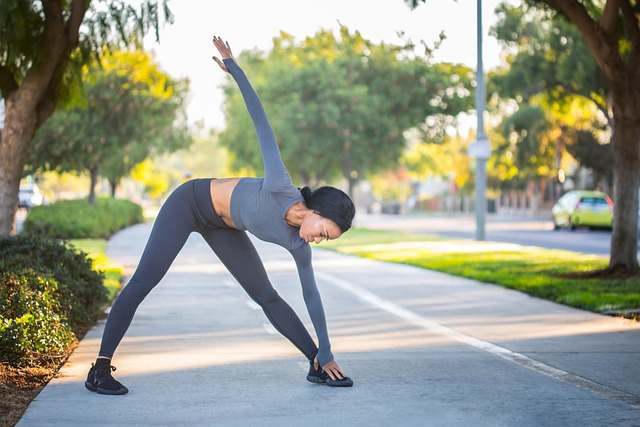Stretching is an essential part of any fitness routine, but have you heard of metabolic stretching? This type of stretching has gained popularity in recent years due to its ability to boost metabolism and aid in weight loss.
Metabolic stretching involves performing specific stretches in a particular sequence to increase flexibility, improve posture, and enhance athletic performance. In this article, we will explore what metabolic stretching is, its benefits, how to perform it, potential risks, and scientific evidence supporting its effectiveness.
What is Metabolic Stretching?
 Metabolic stretching is a type of stretching that involves performing dynamic movements that target multiple muscle groups simultaneously. Unlike traditional static stretching, which involves holding a stretch for a prolonged period, metabolic stretching involves moving through a range of motion while engaging the muscles. This type of stretching can be done as a warm-up before a workout or as a standalone routine.
Metabolic stretching is a type of stretching that involves performing dynamic movements that target multiple muscle groups simultaneously. Unlike traditional static stretching, which involves holding a stretch for a prolonged period, metabolic stretching involves moving through a range of motion while engaging the muscles. This type of stretching can be done as a warm-up before a workout or as a standalone routine.
Metabolic stretching differs from traditional stretching in that it focuses on increasing the heart rate and metabolism while improving flexibility. By engaging multiple muscle groups simultaneously, metabolic stretching can help burn more calories than traditional static stretching. Additionally, metabolic stretching can help improve circulation and oxygen flow throughout the body.
Benefits of Metabolic Stretching
1. Increased flexibility and range of motion: Metabolic stretching can help increase flexibility by targeting multiple muscle groups simultaneously. This can lead to improved range of motion and better overall mobility.
2. Improved posture and balance: By engaging the core muscles during metabolic stretching, you can improve your posture and balance. This can lead to reduced back pain and improved overall body alignment.
3. Enhanced athletic performance: Metabolic stretching can help improve athletic performance by increasing flexibility, range of motion, and balance. This can lead to improved agility, speed, and power.
4. Boosted metabolism and fat loss: By increasing the heart rate and engaging multiple muscle groups simultaneously, metabolic stretching can help boost metabolism and aid in weight loss.
5. Reduced risk of injury: By improving flexibility, range of motion, and balance, metabolic stretching can help reduce the risk of injury during physical activity.
How to Perform Metabolic Stretching
To perform metabolic stretching, start with a warm-up to get your heart rate up and prepare your muscles for stretching. Then, perform a series of dynamic stretches that target multiple muscle groups simultaneously. It is essential to maintain proper form and technique during each stretch to avoid injury.
Recommended frequency and duration of sessions vary depending on individual fitness goals and abilities. However, it is generally recommended to perform metabolic stretching at least two to three times per week for 10-15 minutes per session.
For beginners, it is recommended to start with basic stretches and gradually increase the intensity and duration of each stretch over time. It is also essential to listen to your body and avoid pushing yourself too hard too quickly.
Potential Risks of Metabolic Stretching
As with any physical activity, there are potential risks associated with metabolic stretching. Possible injuries and strains can occur if proper form and technique are not maintained during each stretch. It is essential to take precautions before starting a metabolic stretching routine, such as consulting with a healthcare professional or certified fitness trainer.
It is also crucial to warm up properly before starting any stretching routine and avoid pushing yourself too hard too quickly. If you experience any pain or discomfort during a stretch, stop immediately and seek medical attention if necessary.
Scientific Evidence Supporting Metabolic Stretching
Several studies have been conducted on the effectiveness of metabolic stretching in improving flexibility, balance, and athletic performance while boosting metabolism and aiding in weight loss. One study found that metabolic stretching can improve flexibility and balance in older adults while reducing the risk of falls.
Another study found that metabolic stretching can improve athletic performance by increasing power output in athletes. Additionally, several studies have found that metabolic stretching can help boost metabolism and aid in weight loss.
Metabolic stretching is a type of stretching that involves performing dynamic movements that target multiple muscle groups simultaneously. It can help increase flexibility, improve posture and balance, enhance athletic performance, boost metabolism and aid in weight loss, and reduce the risk of injury. However, it is essential to take precautions before starting a metabolic stretching routine and maintain proper form and technique during each stretch.
Scientific evidence supports the effectiveness of metabolic stretching in improving flexibility, balance, athletic performance, and metabolism. If you are interested in trying metabolic stretching, it is recommended to do so under the guidance of a professional and with caution. With proper technique and consistency, metabolic stretching can be an effective addition to any fitness routine.








